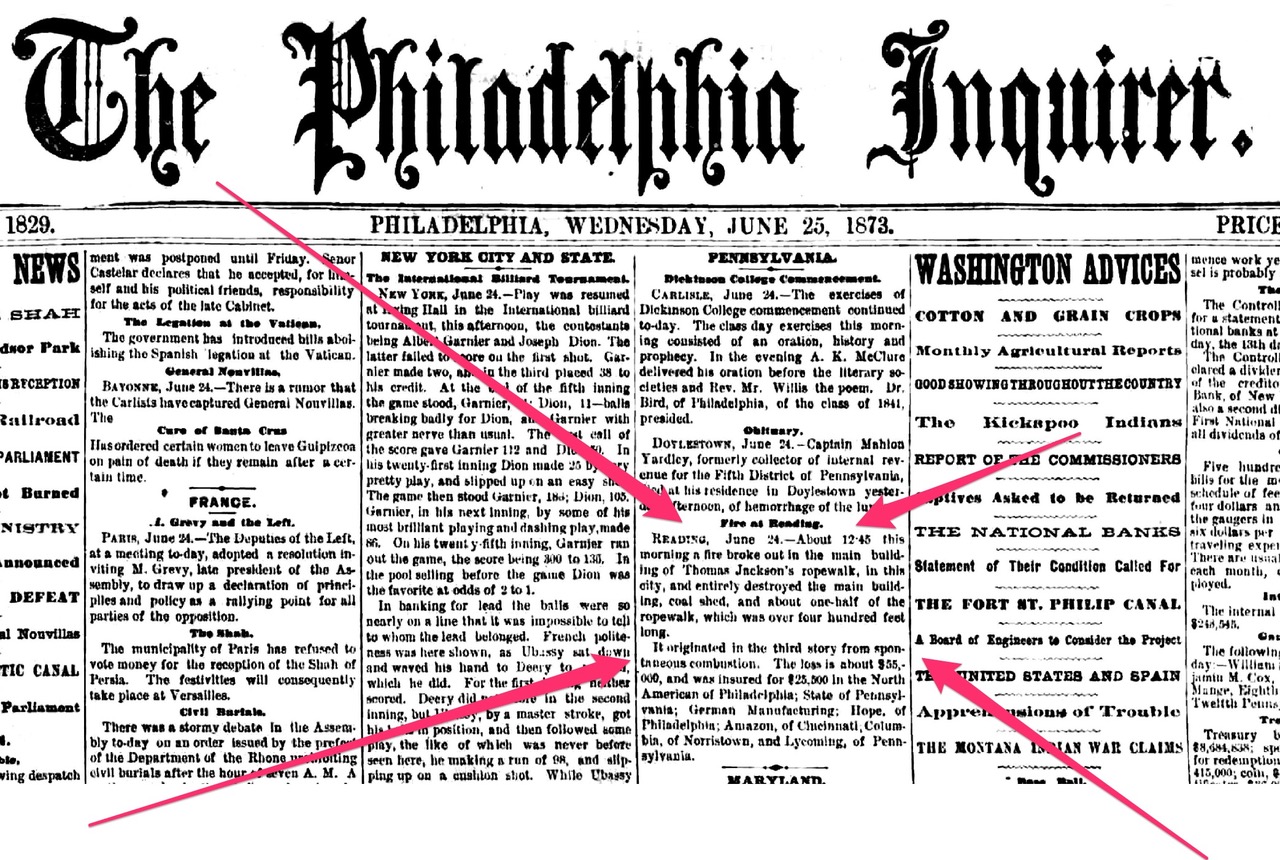
Passionate Abolitionist and
Witness to the American Civil War


Passionate Abolitionist and
Witness to the American Civil War

This photo from the Reading Fire Department’s historic records has several points of interest.
1. Thomas Jackson’s strident views about abolition were often not popular with his white neighbors in Reading. Many resented his support for black folk whom they viewed as irredeemably uneducable while competing for jobs with other groups and by being willing to work at low pay. As a result his unpopularity in some quarters, Thomas Jackson’s whole property was attacked by arsonists more than once. In this case, his loss was a massive $47,000 in 1873 dollars, the equivalent of $1,005,000 in 2020.
2. In those days, there were several competing groups that tried to take control and put out the fire. (Probably for financial returns?) In this case, it is clear that fights between “The Juniors” and the Friendships” resulted in them “devoting their time to battling over a hydrant instead of battling the fire.”
The fight over who should have control over putting out the fire continued through the next night , when there a special meeting as to who was in the right in this disastrous response. Reading the reports now make it seem like petty politics and self interests overriding a focus on what the main priority should surely have been.
Thomas Jackson must have been infuriated in many directions.

In a letter dated July 1874, a broken and disillusioned Thomas Jackson writes:
On the morning of June 24th 1873. our spinning factory and the 2 storey part of our rope walk, (120 yards long) were burnt down and all the valuable machinery made into old iron. The fire began about 1 Oclock A.M. The weather had been very warm & dry for some weeks. It was a very strong heavy wooden building, especially the spinning factory which was 110 feet by 48 feet & three stories high, floored with 12 inch joists and two layers of 1 inch pine boards. It had a great deal of wood in it and made a fire so hot that much of the cast iron machinery was melted, and with the wraught iron was twisted into all manner of shapes.
The whole loss was over fifty thousand dollars. We had 25500 dollars insurence. But only 17100 has been paid so far. The balance they will cheat us out of if they can. I have two law suits with two insurence companies, but how I shall come out I don’t know.
We were always very careful of fire and took every possible precaution. There had been no fire in the factory for the last 10 years. It was heated by steam from the engine in winter & we only run during daylight.
We did not begin building up again untill after my dear sons death, and did not get all ready to start again untill about May 1st But our factory is built of brick now. Brick floors, Slate roof & Iron doors and window shutters all round. The machinery is all iron. There is no wood about it except the large timbers that support the roof. It will be heated by steam from the Engine which is 20 yards away and no fire or lights will ever go into it. But I have only one son to give it to now & if he follows up the trade for ten or 15 years, as I have taught him, and meets with no large losses, it will make him a rich man. Aye well.